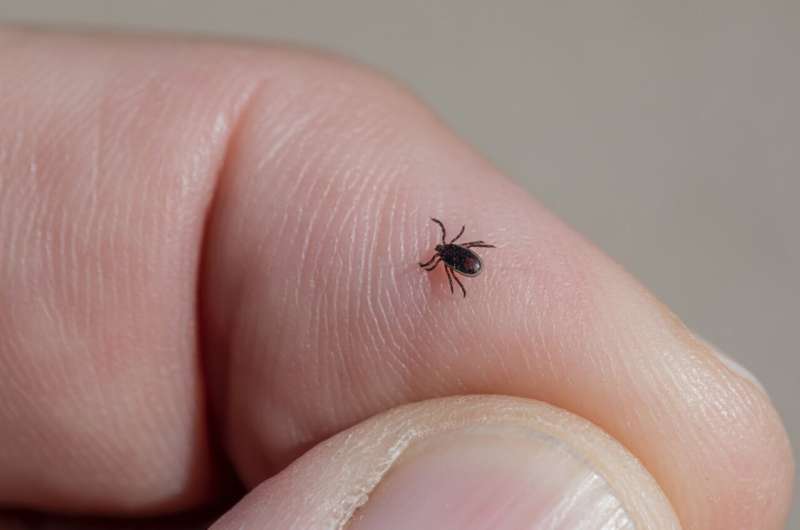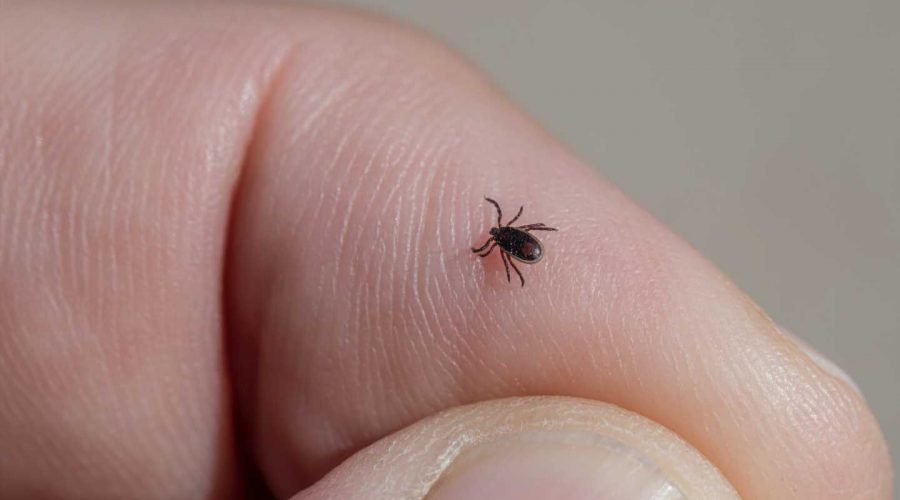It’s time to think about Lyme disease prevention

“There’s no way I have Lyme disease,” stated my friend’s 70-year-old dad while helping carry my mattress into our new apartment last summer, “I wasn’t bitten by a tick—”
“—that you know of,” I interjected, then continued to rapid-fire questions about the expanding circular bull’s eye rash on his arm, a telltale sign of Lyme.
After learning that a couple of weeks prior he had gone hiking in a forested park in Michigan and had recently been experiencing fatigue and confusion, I exclaimed that he should go see a doctor and make sure to get a Lyme disease test.
A few days later, I received a text from my friend: “I’m so glad you talked to my dad, he was diagnosed with Lyme disease and is being treated now.”
This wasn’t entirely surprising, given that the Center for Disease Control and Prevention (CDC) estimates there are more than 476,000 cases of Lyme disease per year in the United States, making it the most common vector-borne disease in North America.
When suspected and diagnosed early, Lyme disease can be easily treated with antibiotics. However, if not treated right away, the bacterial infection can cause potentially life-altering long-term issues such as neurological disorders, cognitive dysfunction, arthritis, and general malaise.
A study conducted at Brown University in 2019 found that up to 2 million people in the U.S. may be suffering from these long-term symptoms.
My friend’s dad was lucky to catch the characteristic rash quickly. Nevertheless, according to the CDC, about 20 to 30% of people with Lyme disease never have the bull’s eye rash and may go months before diagnosis due to the indistinct symptoms and difficulty of testing for Lyme disease.
Additionally, the diagnostic images used in clinical settings are typically of a pink rash on white skin, which contributes to medical racism and likely under- and delayed diagnosis of Lyme disease in people of color. Dan Ly at the University of California, Los Angeles confirmed this diagnostic bias with a 2021 study finding that 1 in 3 newly diagnosed Black patients already had neurological complications from Lyme disease, compared to 1 in 10 white patients.
So how can Lyme disease infections be avoided entirely? By preventing tick bites.
As we enter tick season, typically April through November in New York, it’s important to know what to look for. When people describe their experiences and encounters with ticks, they’re usually describing adult ticks that are relatively easy to spot and remove before they have the chance to transmit the pathogen causing Lyme disease.
The real danger to human health are nymphal ticks—the life stage between a larva and an adult.
The first time I saw a nymphal tick, I was camping with a friend in a forested part of New Jersey that we knew could be tick-infested. In preparation for the trip, my friend had wisely purchased us both a pair of (ironically lime green) socks that were advertised to repel ticks.
As we were making our camp food, I noticed something dark—no larger than a poppy seed—contrasting with the bright green of my sock and crawling up my exposed leg. Despite coating ourselves in bug spray and sacrificing fashion for function, there was a nymphal deer tick, the kind of tick that transmits Lyme disease, ready to make me its next meal.
We scanned every inch of our bodies that night but didn’t sleep too well knowing something so small could be buried in our hair or somewhere else impossible to find.
I later went on to study disease ecology and learned about how tick-borne diseases like Lyme are increasing across the globe due in large part to human-driven changes such as deforestation, human encroachment, and climate change.
Two years into my master’s program, after a long day out in the field doing research, a small and mysterious bull’s eye rash appeared on my knee. I blamed myself and thought, how could this have happened when I know exactly what to look for and check myself for ticks daily?

It’s possible I got lazy and didn’t look close enough one tired afternoon. It’s also possible I checked as well as I could but my fingers missed the minuscule invertebrate latched onto my body.
I received a quick diagnosis and diligently completed my two-week course of antibiotics. I was fortunate not to experience any other complications.
With tick-borne diseases on the rise paired with the fact that the ticks most responsible for transmitting disease are nearly microscopic, preventing tick bites and Lyme disease cannot solely be the onus of individuals, as it mostly is now. It’s too easy to miss a harmful infection.
Federal funding for tick-borne disease research has increased over the past ten years, but not enough to stop the rise in cases of tick-borne diseases. Funding remains low compared to other infectious diseases.
In 2018, the National Institute of Health allocated $30 million towards Lyme disease research—which amounts to a mere $63 per estimated case—while West Nile virus research received $36 million, or about $13,600 per case as calculated in a review article published in Frontiers in Medicine.
Source: Read Full Article
